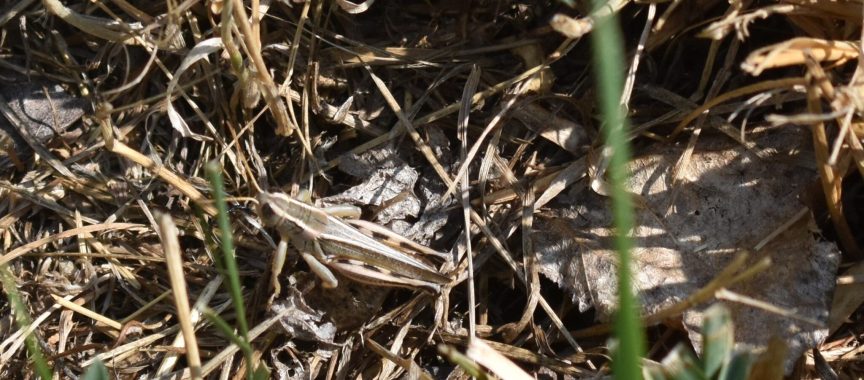News – Sheridan Media
[[{“value”:”
Ranchers and farmers sometimes have a difficult time making a living, especially when nature throws them a curve ball, as it were. There are blizzards in the winter, drought in the summer, floods can wash out new seeding, and wildland fires can burn up grass that was being saved for winter pasture.
And, like the plaque of locus in the Bible, there are sometimes grasshoppers, that eat anything and everything in their path, leaving plants and even trees stripped of leaves, and pastures grass eaten down to practically bare earth.
In July of 1922, there was a ‘hopper invasion so severe that they darkened the sky when they rose up off the ground.
This from The Sheridan Enterprise, July 27, 1922 – Grasshoppers not leaving Sheridan County, is Belief. County Agent declares pests are not equipped with wings which will carry them great distances.
The grasshoppers which rose and clouded the skies of Sheridan Tuesday, are not leaving the county, in the opinion of H.J. Thomas, Agriculture Agent for the County. He stated that while there are migratory grasshoppers, the ones for the last two years have infested Sheridan, are not that kind. They are able to fly only for a short distance and to stay up the air for only a short time. They have fragile wings in comparison to the bulk of their bodies and become quickly exhausted.
“They are not capable of organized flight.” says Mr. Thomas, and there is no reason to believe that they would break their rules at thistime.” There is one comforting theory abroad, however, and that Is that the small red parasites which have been found upon the grasshoppers in great numbers of late, are killing them. Certain it is that the “hoppers arein great pain, and are becoming restless.
Just how fatal the parasites may be to them, it is unable to determine as yet, but the best is hoped for, by the many ranchers who have suffered at the mercy of the pests. The grasshoppers, have been by far the most deadly calamity that has threatened northern, Wyoming in her history as an agricultural stronghold, whole communities in some parts having been wiped out, and the country rendered utterly desolate for miles. Mr. Thomas again stresses the necessity of organized poisoning. Nothing can be done individually. If one man poisons and destroys the hoppers that infect his place, and his neighbor does not. his efforts are practically wasted.
Mr. Thomas said in part, “The point is now clear that the grasshoppers which flew over Sheridan belong to no one on this earth. They are the property of the community. They are pests which no rancher or city man ever hopes to get control of unaided. The man who has been poisoning systematically is now face to face with the problem of feeding Sam Jones’ and Bill Smiths’ grasshoppers.
There is no use in finding fault with the man who does not see the seriousness of the situation until it is upon him, but now a practical and sensible reason why you should do your part is at hand, and if you have not yet been poisoning, it now seem it is reasonable that you should seriously consider doing your share in keeping this pest under partial control. Governor Carey when attending the Farm Bureau meeting the first Saturday in July, said “This is the first time in the history of the state that such a situation has been presented to us” The situation is here and it does seem that one good piece of legislation, would be the consideration of a pest law, so that every one in the community can take part in fighting the common enemy.” A pest law is in operation in Montana, Nebraska, Kansas and Colorado.
Earlier in that year the grasshopper situation was mentioned.
The Sheridan Enterprise, May 24, 1922 – Grasshopper Situation is Serious Throughout County – Heavy infestation of grasshopper eggs in the Upper and Lower Dog regions was reported today by County Agent H. J. Thomas, who made an inspection of that locality this morning. In the Lower Prairie Dog region, he found more grasshopper eggs to the square foot than in any locality he has visited so far, although the eggs are not so well developed as in other localities, where hatchings are largely occurring.
Any hope that may have been entertained that the heavy rains last week, grasshoppers in Sheridan County have been clearly dispelled as the result of numerous inspection trips the past several days. County Agent Thomas, accompanied by William H. Wallace, Burlington Superintendent Frank S. Cone and newspaper men went to the Wallace ranch near Parkman yesterday afternoon and inspected the fields in that locality, where the majority of the grasshopper eggs have already hatched. There they found literally millions of grasshoppers, only a few days old and hardly developed to the extent that they resembled grasshoppers until examined under magnifying glasses. The Burlington right-of-way seemed to be the main ground on which the grasshopper eggs were hatching, although alfalfa fields were heavily infested. Under present plans, grasshopper poisoning will be spread as soon after the majority of the grasshopper eggs have hatched as is possible. The poison will be confined to the places where grasshopper nests have been located with the hope that the poisoning will prevent the spreading of the pests.
Poisoning To Start At Once – Arrangements were being made today to mix the small quantity of grasshopper poisoning which was held over from last year and to spread it in localities where the majority of the grasshopper eggs have hatched. This will be within the next few days. Meanwhile the hatching of grasshopper eggs has been delayed somewhat in other localities so that It is hoped that effective work may be accomplished as soon as the first shipment of grasshopper poisoning arrives.
Delay in securing bran from the mill in Sheridan has occasioned some worry and meanwhile two carloads of sawdust have been ordered rushed to Sheridan to be used in lieu of bran. Stewart Lockwood, representing the Department of Agriculture who has his headquarters Billings, was in Sheridan again yesterday en route to Buffalo, where last night he was to confer with Johnson county farmers and ranchers relative to a grasshopper poisoning campaign in that locality. “Mr. Lockwood went over the situation hastily here and reiterated his previous statement that the re-hatchings are largely occurring, entertained that the heavy rains last only salvation for Sheridan county’s corps will be an intense poisoning campaign throughout the entire county.
Situation Here Hat Not Changed –“The situation is not changed in Sheridan County so far as I have been able to ascertain,” said he “The grasshoppers are here and are developing in droves, and unless a long and cold rainy season should set in, there will be no way to contend with them except through a continuation of the plans you have already outlined.” A mass meeting of stockmen and farmers had been arranged for Buffalo yesterday afternoon and evening to devise ways and means of combating the difficulty in Johnson County. No definite report of the plans outlined was obtainable here today. Mr. Thomas today stated that a number of stockmen and farmers in Sheridan County had received the Impression that compulsory spreading of poison on their land was to be required, even if their lands were free from infestation. This is not the case, Mr. Thomas explained, adding that poison will be ordered spread only where infestation is found to exist.
The Sheridan Enterprise, July 23, 1922
There was obviously a winter ‘hopper infestation near Arvada in 1911. The reader can make his own determination as to the validity of this next story.
The Sheridan Post, February 24, 1911 – Wyoming Grasshoppers Swarming on the Range Specimens Shot and Roped. Grasshoppers in February— not just one or two little, skinny, half-starved hoppers, but whole droves of them, flying and jumping around among the sheep on the ranges, furnish yet another proof of the salubrity of Wyoming’s glorious climate. It also shows how much more wisely nature has dealt with our own state than with the commonwealths adjacent, for in Colorado the hoppers come in summer to eat the crops and cause much damage, while in Wyoming they come in winter, when there is nothing they can destroy.
That this is no fish story, and that there are thousands of hoppers disporting themselves on the range in the vicinity of Arvada, is vouched for by J. A. Waisner, who returned recently from a visit to his ranch and sheep camp in the eastern part of the county. Some of his men were in from the outlying camps and they told Mr. Waisner that the grasshoppers were thick on the range where his sheep were feeding.
Naturally, Mr. Waisner was somewhat skeptical and suggested that the hoppers were all in the herders’ head. George Westland is the herder’s name, and being displeased that his sanity or veracity should be questioned, he determine to furnish absolute proof of the truthfulness of his story. The next day after he returned home Mr. Waisner received a letter from one of his employees at the ranch, and attached to the paper were two defunct hoppers. They are not overly big but it does not require a naturalist to determine that they are genuine hoppers.
The letter is as follows: Dear Sir— George asked me to send you the enclosed grasshoppers to prow the truth of the hopper story he told old you. He says he shot them on a snow bank today, but you see there is nothing the matter with his head. Yours respectfully. Dan. “P S. The one on the right was an outlaw, and he got pretty badly smashed up, while George was trying to rope him.”
You might call it a ‘big grasshopper story’.
But, while it is highly doubtful that there were hoppers big enough to shoot or rope, there is no question about grasshoppers doing a great deal of damage to crops. Infestations of grasshoppers can cause farmers to lose a great deal of income, like the one 102 years ago this week in 1922.
“}]]
Last modified: July 27, 2024





